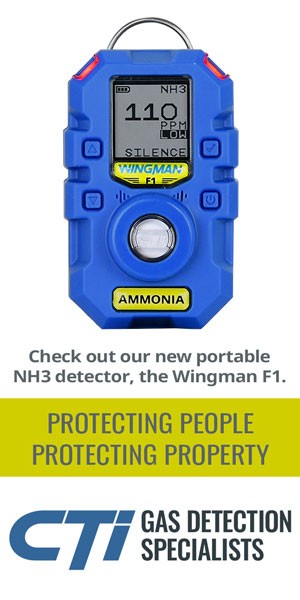IIAR Releases Tool to Compare Refrigerants
The International Institute of Ammonia Refrigeration said it has released a “Refrigerant Evaluator Tool” to help IIAR members and others assess their refrigerant choices and evaluate their options as the Environmental Protection Agency phases out high global warming potential refrigerants.
The IIAR Refrigerant Evaluator Tool can be found here: https://refrigerantcomparison.com/
John Flynn, the Chair of the IIAR Education Committee, the committee responsible for the creation of the new tool, said refrigerant choices outside of the world of natural refrigerants have gotten more complex as a result of the phaseouts, making IIAR’s newly released comparison tool a valuable resource for anyone trying to compare the performance and efficiency of different refrigerants.
“For us in the industrial refrigeration business, most of our customers use naturals, but some use synthetics, and those customers will have to find new refrigerants,” said Flynn. “The purpose of this tool is for those people to find new refrigerants and to help them evaluate their options.”
Flynn said the IIAR tool includes information on natural refrigerants like ammonia, CO2, propane and other hydrocarbons alongside synthetic refrigerants.
“This tool allows anyone to look at a side-by-side comparison of natural and synthetic refrigerants and determine which refrigerants have the best qualities for any given installation,” he said, adding that “it gives a lot of fact-based information to help end users and contractors quickly evaluate one refrigerant against another.”
Factors that allow users to compare performance and efficiency include: ozone depleting potential; flammability; the kinds of lubricants needed; and compressor brake horsepower per ton (a measure of how much energy must be put into a system versus the refrigeration benefit output).
IIAR’s Refrigerant Evaluator Tool displays refrigerant information across two screens. The first screen displays information for individual refrigerants, while the second screen allows a side-by-side comparison of up to three refrigerants.
The format helps a facility owner make decisions like comparing safety system costs and installation costs or performing an evaluation of the full costs of installing and running a refrigeration system with a particular refrigerant, said Flynn.
“A lot of the things we’re accustomed to in the world of natural refrigerants – like ventilation and safety and venting – these are things that newer synthetics will face, though prior synthetics did not have as concerns [because previous synthetics were classified as A1 refrigerants].”
To get below the EPA-mandated 150 GWP limit, synthetic refrigerant blends now carry an A2L classification, which puts them in the same B2L flammability category as ammonia because of their similar flammability characteristics.
And that means that “if you’re using new synthetics, you have to adhere to the safety code requirements such as ventilation and refrigerant detection that are similar to the requirements that ammonia has always had,” said Flynn.
“Part of the purpose and beauty of this tool that IIAR has created is that it helps anyone who is not familiar with these requirements take them into account as they compare all the different factors that go into making a refrigerant decision.,” he said. “The information the tool displays is built upon a database of information that is readily available but not all in one place, so this tool helps owners find all that information in one place.”
Flynn said the tool’s information sources include the standards ASHRAE 15 and ASHRAE 34, different chapters of the ASHRAE Handbook, information from the U.S. EPA, NIST and other sources that are outlined in a fact sheet that accompanies the tool.
“With the focus on our climate and the impact refrigerants can have, this is an important time for facility owners to recognize that leaks from their systems can harm the environment,” he said. “Because of the steps the EPA is taking to manage releases, a time of change is coming. This tool gives everyone the information needed to help navigate that time of change and make the most informed decisions.”
IIAR’s Education Committee task force responsible for developing the refrigerant evaluator tool was led by Jose Mergolhoa and includes Caden Matson, Josh Isely, Wayne Borrowman, Chris Savage and John Flynn as well as IIAR staff members Tony Lundell and Eric Smith.











